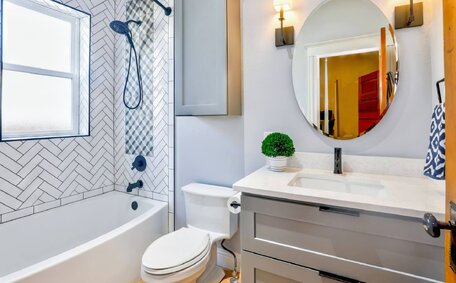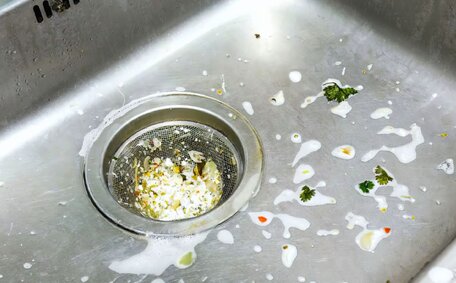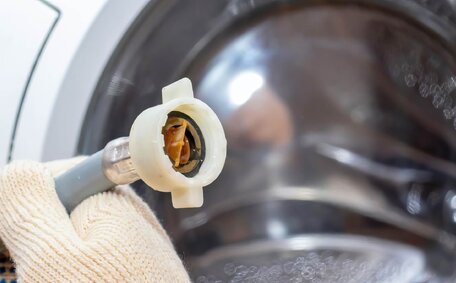Understanding Pipe Relining
Pipe relining, a trenchless repair technique, fixes pipes by inserting a resin-saturated liner directly into the damaged area, bypassing the need for excavation.
Relining offers several benefits over traditional pipe replacement:
- Less disruptive - Pipe relining revitalises pipes without the need for expensive and disruptive excavation, preserving landscapes and indoor flooring.
- Faster repairs - Pipe relining can often be finalised in less than 24 hours
- Improved flow - The smooth new pipe interior improves drainage flow rates
- Long-lasting - Relined pipes have a typical service life of 50+ years
Detailed preparation is crucial for a successful relining outcome:
- CCTV inspection - Identifies damage within the section of pipe requiring restoration
- Cleaning - High pressure water or mechanical cutters remove old pipe lining, roots, buildup
- Bypass pumping - Ensures continued flow during the relining process
- Sizing - Getting pipe dimensions right for the new liner
Careful preparation allows for efficient management of issues like tree root intrusions through pipe relining, minimizing major disturbances. Delve into the details of the relining process and learn more with our comprehensive guide.
What is Pipe Relining?
Pipe relining repairs damaged pipes by inserting and curing a resin-impregnated fabric tube within the existing pipe to restore structural integrity, eliminating the need for excavation.
The process involves:
- Examining the pipes with a CCTV camera allows experts to detect any damages
- Scrubbing the pipes utilising high-pressure water jets or mechanical blades
- Inserting an epoxy-soaked felt lining into the pipe can be custom-fit by inflating it to the pipe’s dimensions
- Curing the lining using hot water, steam or UV light to harden the resin
- The final step includes reopening service connections once the lining has cured
Discover the critical benefits of pipe relining for your sewer and stormwater systems that we consider essential:
- Minimal disruption - Pipe relining works with pipes in use and is less intrusive compared to traditional methods, with materials inserted and bonded to repair them
With thorough inspection and preparation, relining facilitates complete pipe repairs without substantial excavation, benefitting both residential and commercial properties.
Benefits of Pipe Relining
Pipe relining offers numerous benefits over traditional pipe replacement methods:
- Cost savings - Compared to full replacement, the cost savings are substantial given that relined pipes can offer a significantly extended lifespan. There’s no need for costly digging, especially when the pipes only require internal restoration.
- Minimal property damage - The trenchless technique inflicts minimal to no damage to your property, both inside and outside.
- Speed - Jobs take hours or days versus weeks with pipe replacement.
- Longevity - The new pipe lining adds significant life expectancy to the pipeline, designed to last 50+ years.
- Continued use - Through innovative methods such as sewer relining, water and sewage continue to flow uninterrupted during refurbishment.
- Improved flow - Smooth inner walls increase drainage rates.
- Added pipe strength - Liner bolsters old pipes against future damage.
- Versatility - The process of relining expertly addresses a multitude of issues such as cracks, tree roots invasion, and corrosion.
With minimal fuss or property damage, explore pipe relining below the surface for rapid, thorough, and enduring pipe repair solutions.
Initial Assessment: Inspecting the Damage
It’s crucial to comprehensively assess the location, magnitude, and causes of damage before starting pipe relining to ensure successful results. This foundational scrutiny is central to the repair solutions, involving thorough pipe health assessment and preparation, which serves several key purposes:
- Identifies access points for inserting relining materials and equipment
- Maps out piping layout to customise liner sizing and curing
- Pinpoints specific damage like cracks, holes and root intrusion
- Checks pipe diameter and other attributes for liner compatibility
- Assesses pipe material composition and condition
Incorporating specialised mapping software and CCTV practices, optimised for conditions in Australia and New Zealand, our approach guarantees non-intrusive internal pipe inspections. The camera, inserted through cleanout points or household drains, records video of the entire pipe network, visually pinpointing damage and identifying accessible areas. Be sure to examine these vital specifics.
Proper initial drain relining assessment provides the blueprint for successful repairs, ensuring the process directly targets the problem areas needing attention.
Using Cameras to Analyze Pipe Condition
A camera inspection provides a real-time visual assessment, identifying and mapping interior pipe damage to inform repair strategies.
Central to our service commitment, we provide clients with our advanced drain camera snake, featuring a flexible camera head for thorough inspections. Navigating the complex network, the camera relays live footage so operators can see real-time insight into your pipes’ conditions when it comes to inspections. Footage is recorded to analyse later or monitor above ground.
Key things we assess:
- Cracks, holes, root intrusion - Pinpoints the problem areas
- Pipe length and direction - Maps out the full piping layout
- Dimensions, joints, connections - Checks compatibility with liners
- Flow direction, blockages - Locates flow restrictions
CCTV inspection guarantees comprehensive understanding of the full extent of damage before commencing with fixing your pipes. It shows if further cleaning or preparation is needed first. The clearer the footage, the better repairs we can perform.
Cameras provide vital eyes inside pipes. This visual data then guides tailored solutions - like relining selected sections - without unnecessary excavation.
Preparation: Cleaning and Clearing the Pipes
Before inserting the relining tube, it’s vital to thoroughly clean out your existing pipes for optimal liner adhesion. This clears any obstructions so the liner can be easily installed throughout the full length.
We use a specialized water jetter, outperforming traditional pressure washers and specifically designed for complex pipe networks. Water forcefully ejects at up to 5000 PSI, efficiently used remove assorted pipe wall accumulations including grease, scale, rust, and other debris.
For challenging obstructions like intruding pipe joints, we deploy a robotic cutter in conjunction with mechanical drain cleaners. These tools scratch and grind away materials while being rotated through the line.
The thoroughness of cleaning ensures uncompromised liner installation and resin adhesion, essential for quality repairs. It also lets water flow freely again once repairs are finished. Proper prep work ensures reliable, long-lasting pipe remediation.
Safety Precautions for Prep Work
Safety is paramount during pipe preparation work. Here are some key precautions to take:
- Use proper safety equipment - Wear gloves, goggles, hard hats, high-visibility vests, and steel-toe boots as needed.
- Secure the work area - Cordon off or section off areas around floor/wall access points to prevent accidents.
- Control fumes - Ensure proper ventilation when using hydro jetters or mechanical cutters in confined spaces.
- Check for hazards - Inspect equipment, look for asbestos, toxic materials, exposed wires etc before starting.
- Manage traffic/pedestrians - Set up cones, barricades, temporary fences for public/high traffic areas.
- Coordinate with property managers to inform occupants of work schedules and potential disruptions, particularly in commercial settings.
- Use qualified technicians - They are formally trained to identify and handle risks during pipe preparation.
Adhering to occupational health and safety regulations safeguards workers, onlookers, and real estate when comes to activities prior to relining.
Choosing the Right Relining Material
When it comes to pipe relining, choosing the right material for the liner is critical. There are a few key options to consider:
Epoxy Resin
Epoxy is the most common resin used, more than just superb in chemical resistance, it endures for over half a century, making epoxy liners a premier choice. These liners conform effectively to various pipe sizes, including common PVC diameters from 50mm to 300mm, creating a snug fit inside the existing structure.
It soaks into a felt liner, then cures when exposed to hot water or steam.
Polyester Resin
Polyester, one of the relining products, also saturates a felt tube. It cures more slowly than epoxy when heated. They mainly suit smaller diameter pipes.
While cost-effective, polyester liners have limited chemical and thermal resistance after installation.
Glass Reinforced Plastic (GRP)
GRP uses a woven glass tube coated in polyester or epoxy resin. GRP liners are extremely strong and ideal for conditions requiring high structural strength. However, their rigidity makes them less suitable for fitting into curving or uneven pipes.
In understanding your situation involving failing pipes, we diligently consider factors such as pipe size, shape, and composition; alongside flow rates and environmental conditions when pinpointing the ideal liner. Customising the liner to suitable pipes for your unique configuration helps maximise relining effectiveness.
Relining Process: Insertion and Curing
Following thorough cleaning and preparation, we introduce the new lining to your pipes. The relining process includes:
- The epoxy-soaked liner is loaded into an inverter drum, securely sealed to initiate the relining. This resilient felt tube will seamlessly integrate with the existing pipeline, creating a robust relined pipe interior.
- The inverter drum carefully positions the liner, inflating it securely into place in sections that have been compromised. Compressed air or water pressure is applied meticulously, turning the tube inside out, ensuring it adheres well to the pipe interior.
- Employing steam, hot water, or UV light introduces the hardening agent to the epoxy, undertaking the vital curing process. The working time for the resin to set properly stretches between 1-6 hours.
- Once solidified, technicians trim the liner ends to reopen service connections, restoring smooth, unimpeded flow.
The result is a durable pipe lining that seals damage and reinforces weak spots for 50+ years, completed in a single day without excavation.
Relining fortifies your system, resulting in sewer pipes stronger than ever. Engage with our expert team to uncover suitable relining options crafted for the individual characteristics of your plumbing infrastructure.
Maintaining Your Relined Pipes
To ensure your relined pipes continue working effectively for years to come, some simple maintenance is required:
Regular Drain Inspections
Periodically give us a buzz to arrange a CCTV camera check and ensure your pipes maintain their pristine condition. This checks for new cracks or damage. Annual inspections enable early repair before major problems arise.
Pipe and Drain Clearing
Routine drain clearing every 6-12 months using substances like baking soda or enzyme cleaners can prevent build-up. For high-pressure jet cleaning, consult our skilled specialists.
Avoid Aggressive Chemicals
Aggressive chemicals or acid-based cleaners may degrade your relined pipes; opt for gentler, septic-safe alternatives.
Update Household Fixures
Replacing ageing faucets, showerheads and toilets with newer water-efficient models reduces strain on your relined pipes.
Periodic inspections and drain maintenance can extend your relined pipes’ lifespan, potentially avoiding repairs for decades. Contact us for more information on pipe longevity.






